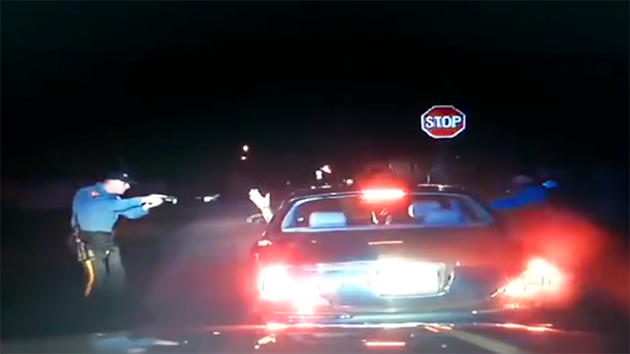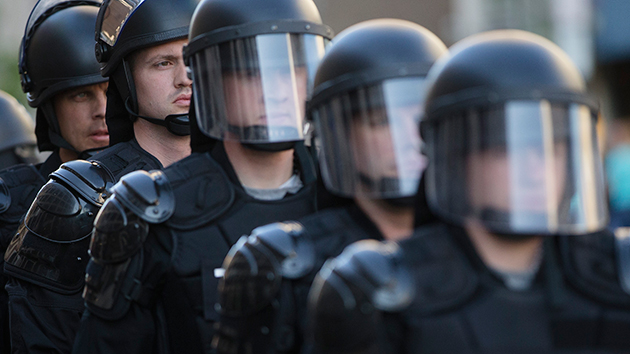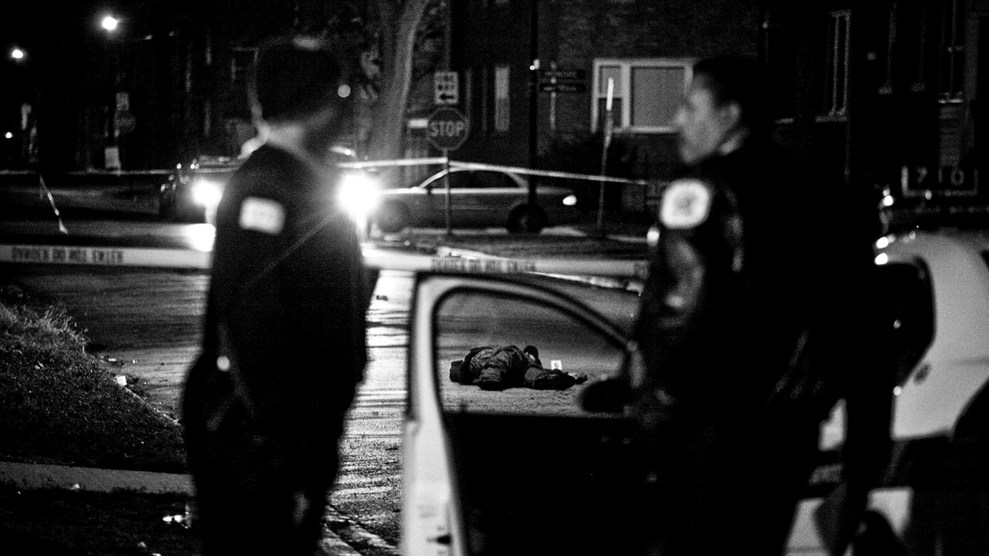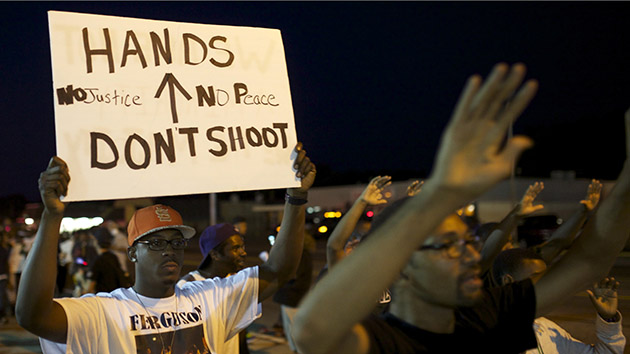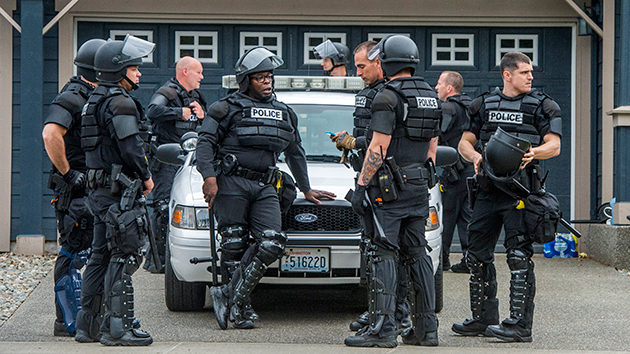
Police stand outside the home of a Lacey, Washington officer involved in a shooting of two accused shoplifters, May 22, 2015.Peter Haley/The News Tribune/AP
Two major news investigations have shed new light onto who dies at the hands of the police—and how. Using public records, news coverage, crowdsourced databases, and old-fashioned reporting, reporters at the Washington Post and Guardian have published what are arguably two of the most extensive examinations of recent police shootings across the country. (Read more about how they compiled their data, here and here.) The two reports confirm and build upon what previous attempts to collect and examine this data have already shown: Police killings happen much more frequently than the existing official data shows.
There’s a lot to digest, so we’ve pulled out some key takeaways:
- Police officers kill suspects at about twice the rate calculated by the FBI. In the first five months of 2015, the Post documented a total of 385 people who were fatally shot by police officers, or 2.5 per day—a rate more than twice that tallied by the federal government over the past decade. The Guardian, which counted 467 deaths by police so far in 2015—including not just deaths from gunfire but those involving Tasers, vehicle, or other causes—arrived at a similar rate.
- The majority of those killed are armed. Armed suspects primarily had guns, the Post reported, but were also armed with “potentially lethal objects” such as knives, machetes, and in one instance, a nail gun.
- But a significant chunk of suspects were unarmed when they were killed. The Post found that nearly 13 percent of victims in its dataset were unarmed, while 22 percent of those counted by the Guardian were unarmed.
- Officers involved are rarely charged. This is consistent with prior research on prosecutions in cases of officer misconduct and use of deadly force. In the Post‘s 385 cases, only three officers have faced charges: Michael Slager (for the death of Walter Scott in South Carolina), Robert Bates (for killing Eric Harris in Oklahoma), and Lisa Mearkle (who killed David Kassick in Pennsylvania).
- There are significant racial disparities among the dead, particularly among unarmed suspects. While the majority of suspects in the cases the Post looked at were white, blacks and Hispanics made up two-thirds of those who were unarmed. The Guardian‘s reporting showed that about one-third of black suspects killed were unarmed, compared with one-fourth of hispanic suspects, and about one-sixth of white suspects. Racial disparities in police killings have also been documented in databases maintained by the FBI, the Bureau of Justice Statistics, and the Centers for Disease Control and Prevention.
- About a quarter of all suspects killed were reportedly mentally ill. According to both the Post and the Guardian.
- Most of those killed are men. Five percent of suspects tracked by the Post were female, consistent with the Guardian‘s breakdown. While most of the high-profile officer-involved shootings since Ferguson have involved men, several ongoing campaigns are bringing more attention to the deaths of women.
- The majority of suspects were between 25 and 44 years old. That’s based on the Post‘s analysis. The three youngest victims identified by the Guardian were 16. The oldest was 87.
- At least 27 people were killed by a Taser. That finding’s from the Guardian. Tasers are considered a less-lethal weapon by law enforcement officials, but their use has been recently questioned by the United Nations Committee Against Torture.
- The deaths involved a small group of the nation’s estimated 18,000 law enforcement agencies. Three hundred and six, to be exact. The Post found that 19 state and local departments were involved in three or more fatal shootings each, including the police departments of Los Angeles, Oklahoma City, and Bakersfield, California.
- Police officers are responsible for 1 in every 13 gun deaths. That figure, the equivalent of about 8 percent, comes from the Post‘s Christopher Ingraham. That’s a lot more than suggested by other data on gun violence in America.
It’s also worth noting what these investigations don’t readily show. It’s unclear, for instance, in how many cases police officers were known to have a history of misconduct or a questionable record. How many cases were captured on video? Are there notable racial disparities among mentally ill suspects? To what extent do the Post‘s and the Guardian‘s probes reveal incidents that weren’t previously publicized?
These questions still linger. Still, for anyone who has been keeping an eye on police killings, these reports are a valuable start toward filling the gaping holes in the data.
